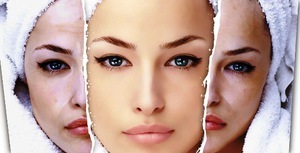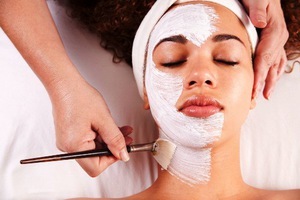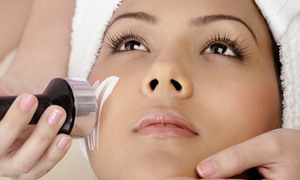The word "peeling" comes from the English expression "to peel", which means "to peel". For the first time this procedure was used in Ancient Egypt: apply balms, oils and acid to carry out what today is called "peeling chemical".

In Ancient Rome and Greece for these purposes is used the lemon and the juice of the grape, the wine, and the acid tartaric, acid milk, which later came to Europe. In Asia, the procedure appeared in the Middle ages and quickly became the most popular cosmetic product to maintain the beauty of the skin.
The types of chemical peels
All types of chemical peels can be divided into two groups:
- House of shells – this includes the purchase of products and traditional recipes. The main difference of this species: the almost complete absence of trauma, a less pronounced effect and the ability to use a peeling on your own, without spending time and money to visit the salon. Folk remedies have the effect of accumulation: the longer and more regularly they use, the better will be the result. Home peels are not suitable for solving serious problems, however, is faced with small imperfections and can be used as a prophylaxis.
- Salon peeling including chemical, laser, mechanical, ultrasonic, and other types. The main feature of the procedure are speed and efficiency: after a couple of visits, there is a significant positive change, heal many skin problems to solve using a home option has failed. Salon exfoliation is strictly professional cosmetologist in the office, as it involves the use of highly concentrated products and devices, improper use of which can cause significant damage. In addition, this type of cleaning is not suitable for frequent use.
The exhibition depth peeling is divided into several types:
- Smooth surface: these include home-made peels to maintain the appearance of the skin and for cleaning. The other type with a predominance of the cabin.
- Surface area: affects the top Horny layer of the skin, without penetrating too deeply. Helps to soften the skin, eliminate fine wrinkles and spots, narrow pores. It can also be used to prepare the skin for other cosmetic procedures.
- Average: this option is ideal for those who want to get rid of the hyperpigmentation, scars, deep wrinkles, enlarged pores, and serious skin diseases. Full recovery takes a few weeks, but reviews confirm that it is worth. After recovery, the face looks younger for 5-10 years.
- Peeling deep: it is necessary after 35-50 years, when the wrinkles became much deeper, and the skin can not recover on its own. After doing the procedure often requires hospitalization stay, however, the effect persists for several years.
The result of flaking

The result of the use of the rind of any kind on the same, the main difference is in the depth of penetration:
- It produces an exfoliation of the dead skin cells from the skin, removing the top layer, the skin becomes smooth and soft;
- Massage of the skin and body, stimulates circulation and the production of collagen and elastin, the skin gets proper food and get more young people due to the active formation of new cells;
- Small particles of acid to penetrate into the pores and clean them, that will allow you to get rid of acne, pimples and inflammation, clear black spots and narrow pores;
- Through cleaning to remove the layer of excess fat, regulates the sebaceous glands, the skin gets a matte finish.
- After the application of the flaking of the skin much more effectively receive follow-up care, both for home and salon.
Homemade versions
Among the tens of recipes of shells that can be done at home, especially prominent exfoliation with coffee grounds and baking soda. Due to the small particles, which clean the skin and help prevent roughness, dull skin and clogged pores. Both are chemical peels superficial. The reviews also recommend the use of coffee body scrub.
Between chemistry emphasize the peel of a mixture of herbs, aspirin or hilak Forte. In the stores you can find ready-made peels, which contain a strong amount of acid. During the application, you must strictly follow the instructions.
Popular salon of shells
Salon facial peels are divided into several types, in accordance with the materials used. Each species has its own characteristics and may be proposed by the cosmetologist depending on the problem. To obtain the correct result, it is necessary to have a course of several procedures.
Chemical peels
One of the most popular chemical peels is: under the influence of the acid, it produces a controlled burn that destroys the upper layer of the skin. This allows the update of the epidermis, getting rid of many problems. The procedure is not recommended if you have dry or overly sensitive skin.

Depending on the acid and its concentration is suitable for almost everyone. Chemical peels superficial include milk (35-70%), glycolic (25-70%), salicylic (15%), almonds (30-50%), grape (size 25-50%), a mixture of salicylic and lactic acid with a substance that's special. The average of the impact they have phenolic compounds (25 and 35%), salicylic (30%), acetic acid (10-40%).
Chemical peels can be performed at home, but their concentration must be significantly lower to avoid side effects or burns due to improper use.
The process is the same in both cases: to clean the face for a few minutes to apply a mixture, which is then removed by solvent and the large amount of cold water.
Separately to highlight meso-peeling. It is done with glycolic acid (1%) and has almost no contraindications, redness and flaking of the skin in the rehabilitation process. You can use it at any time of the year.
One of the type of chemical peel is the peeling "Sea needle". Helps to deal with keratosis, acne, premature aging of the skin, sun damage, enlarged pores, scars and pigmentation. The peeling is completely natural and consist of minerals, trace elements and vegetable proteins, which strengthen the capillaries and have anti-inflammatory action.
Mechanical exfoliation
Mechanical exfoliation is suitable for sensitive skin,as it does not hurt him. On clean skin, spray the particulate abrasive, which remove the top layer of the skin, making it more soft, clean and smooth. At the same time, smoothing wrinkles, removing scars and marks of acne.
Ultrasonic and laser peels
Its popularity stems from the speed: a good result is noticeable almost immediately, in addition, the skin is not damaged and does not require a long recovery. During the procedure, the device is used and ultrasonic waves, which accelerate the skin's metabolism and helps to update.
It has a similar effect, laser peel, but instead of ultrasound is used the laser. Stimulates the metabolism and helps to reduce wrinkles and eliminate under the eye circles.
Enzyme peeling
This is the most easy and gentle exfoliation, apply that may even the owners of dry and sensitive skin. Its effect is due to enzymatic substances (enzymes) that help to improve the blood circulation, stimulate collagen and have a positive effect on the immune and endocrine systems. The enzyme peel is suitable for simple problems of the skin.
The contraindications for the use of peeling
Each procedure has a number of contraindications, which must inform to the beautician for advice. Common side effects include:
- Pregnancy and lactation, age under 18 years;
- Allergy and individual intolerance to the components;
- The temperature of any viral disease, because the body is weakened by disease;
- The acute form of chronic diseases;
- Herpes in the acute phase, the inflammation purulent rashes and pimples on the affected area.
Also, each chemical peel has a number of side effects, the most common are redness, swelling, violation of sensitivity, flaking. The symptoms pass in a few days.

After salon procedures requires quite a bit of time to avoid the sun, not to sunbathe, not to visit the sauna, steam bath, swimming pool or Solarium, but also, do not use any aggressive cosmetics.
The results
Exfoliation at home or salon is one of the main ways to restore skin clarity, softness and elasticity. Depending on the purpose and the condition of the skin beautician can offer a good rate of salon, chemical peels, after which the result will be to maintain the house. The selection of the best peeling for the face depends on the condition of the person and problems.
In addition to the person to apply to the skin of the whole body. This will help to make the skin smooth and soft, getting rid of cellulite, stretch marks, inflammation, and rashes, wrinkles and excess weight. It is worth remembering that a peel is not enough: it must be supplemented with exercises, diet, massages and other treatments.






































